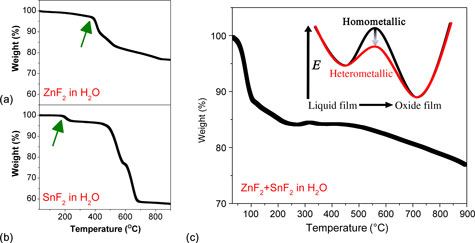Crossref Citations
This article has been cited by the following publications. This list is generated based on data provided by
Crossref.
Park, Jee Ho
Lee, Su Jeong
Lee, Tae Il
Kim, Jung Han
Kim, Chul-Hong
Chae, Gee Sung
Ham, Moon-Ho
Baik, Hong Koo
and
Myoung, Jae-Min
2013.
All-solution-processed, transparent thin-film transistors based on metal oxides and single-walled carbon nanotubes.
Journal of Materials Chemistry C,
Vol. 1,
Issue. 9,
p.
1840.
Seo, Jin-Suk
Jeon, Jun-Hyuck
Hwang, Young Hwan
Park, Hyungjin
Ryu, Minki
Park, Sang-Hee Ko
and
Bae, Byeong-Soo
2013.
Solution-Processed Flexible Fluorine-doped Indium Zinc Oxide Thin-Film Transistors Fabricated on Plastic Film at Low Temperature.
Scientific Reports,
Vol. 3,
Issue. 1,
Seo, Jin-Suk
and
Bae, Byeong-Soo
2014.
Improved Electrical Performance and Bias Stability of Solution-Processed Active Bilayer Structure of Indium Zinc Oxide based TFT.
ACS Applied Materials & Interfaces,
Vol. 6,
Issue. 17,
p.
15335.
Zhang, Xiangyu
Zhu, Liping
Xu, Hongbin
Chen, Linxiang
Guo, Yanmin
and
Ye, Zhizhen
2014.
Highly transparent conductive F-doped ZnO films in wide range of visible and near infrared wavelength deposited on polycarbonate substrates.
Journal of Alloys and Compounds,
Vol. 614,
Issue. ,
p.
71.
Kwack, Young-Jin
and
Choi, Woon-Seop
2016.
Electrohydrodynamic Jet Printed Indium–Zinc–Oxide Thin-Film Transistors.
Journal of Display Technology,
Vol. 12,
Issue. 1,
p.
3.
Zhang, Qing
Shao, Shuangshuang
Chen, Zheng
Pecunia, Vincenzo
Xia, Kai
Zhao, Jianwen
and
Cui, Zheng
2018.
High-Resolution Inkjet-Printed Oxide Thin-Film Transistors with a Self-Aligned Fine Channel Bank Structure.
ACS Applied Materials & Interfaces,
Vol. 10,
Issue. 18,
p.
15847.
Hegazy, Ahmed R.
Salameh, B.
and
Alsmadi, A.M.
2019.
Optical transitions and photoluminescence of fluorine-doped zinc tin oxide thin films prepared by ultrasonic spray pyrolysis.
Ceramics International,
Vol. 45,
Issue. 15,
p.
19473.
Ryu, Sang Ouk
Ha, Cheul Ho
Jun, Ho Young
and
Ryu, Si Ok
2020.
Annealing Temperature Dependence of ZTO Thin Film Properties and Its Application on Thin Film Transistors
by Inkjet Printing.
Journal of Electronic Materials,
Vol. 49,
Issue. 3,
p.
2003.
Miyakawa, Masashi
Nakata, Mitsuru
Tsuji, Hiroshi
Iino, Hiroaki
and
Fujisaki, Yoshihide
2020.
Impact of fluorine doping on solution-processed In–Ga–Zn–O thin-film transistors using an efficient aqueous route.
AIP Advances,
Vol. 10,
Issue. 6,
Sil, Aritra
Avazpour, Laleh
Goldfine, Elise A.
Ma, Qing
Huang, Wei
Wang, Binghao
Bedzyk, Michael J.
Medvedeva, Julia E.
Facchetti, Antonio
and
Marks, Tobin J.
2020.
Structure–Charge Transport Relationships in Fluoride-Doped Amorphous Semiconducting Indium Oxide: Combined Experimental and Theoretical Analysis.
Chemistry of Materials,
Vol. 32,
Issue. 2,
p.
805.
Pan, Wengao
Zhou, Xiaoliang
Lin, Qingping
Chen, Jie
Lu, Lei
and
Zhang, Shengdong
2022.
Low temperature and high-performance ZnSnO thin-film transistors engineered by in situ thermal manipulation.
Journal of Materials Chemistry C,
Vol. 10,
Issue. 8,
p.
3129.
Pan, Wengao
Zhou, Xiaoliang
Li, Ying
Dong, Wenting
Lu, Lei
and
Zhang, Shengdong
2022.
High performance of ZnSnO thin-film transistors engineered by oxygen defect modulation.
Materials Science in Semiconductor Processing,
Vol. 151,
Issue. ,
p.
106998.
Sil, Aritra
Deck, Michael J.
Goldfine, Elise A.
Zhang, Chi
Patel, Sawankumar V.
Flynn, Steven
Liu, Haoyu
Chien, Po-Hsiu
Poeppelmeier, Kenneth R.
Dravid, Vinayak P.
Bedzyk, Michael J.
Medvedeva, Julia E.
Hu, Yan-Yan
Facchetti, Antonio
and
Marks, Tobin J.
2022.
Fluoride Doping in Crystalline and Amorphous Indium Oxide Semiconductors.
Chemistry of Materials,
Vol. 34,
Issue. 7,
p.
3253.
Bae, Jinbaek
Ali, Arqum
Park, Chanju
and
Jang, Jin
2023.
High‐performance, coplanar amorphous InGaZnO thin‐film transistors by spray pyrolysis on polyimide substrate for low‐cost manufacturing of foldable active‐matrix organic light emitting diode display.
Journal of the Society for Information Display,
Vol. 31,
Issue. 5,
p.
308.
Bae, Jinbaek
Ali, Arqum
and
Jang, Jin
2023.
Spray Pyrolyzed Amorphous InGaZnO for High Performance, Self‐Aligned Coplanar Thin‐Film Transistor Backplanes.
Advanced Materials Technologies,
Vol. 8,
Issue. 1,



